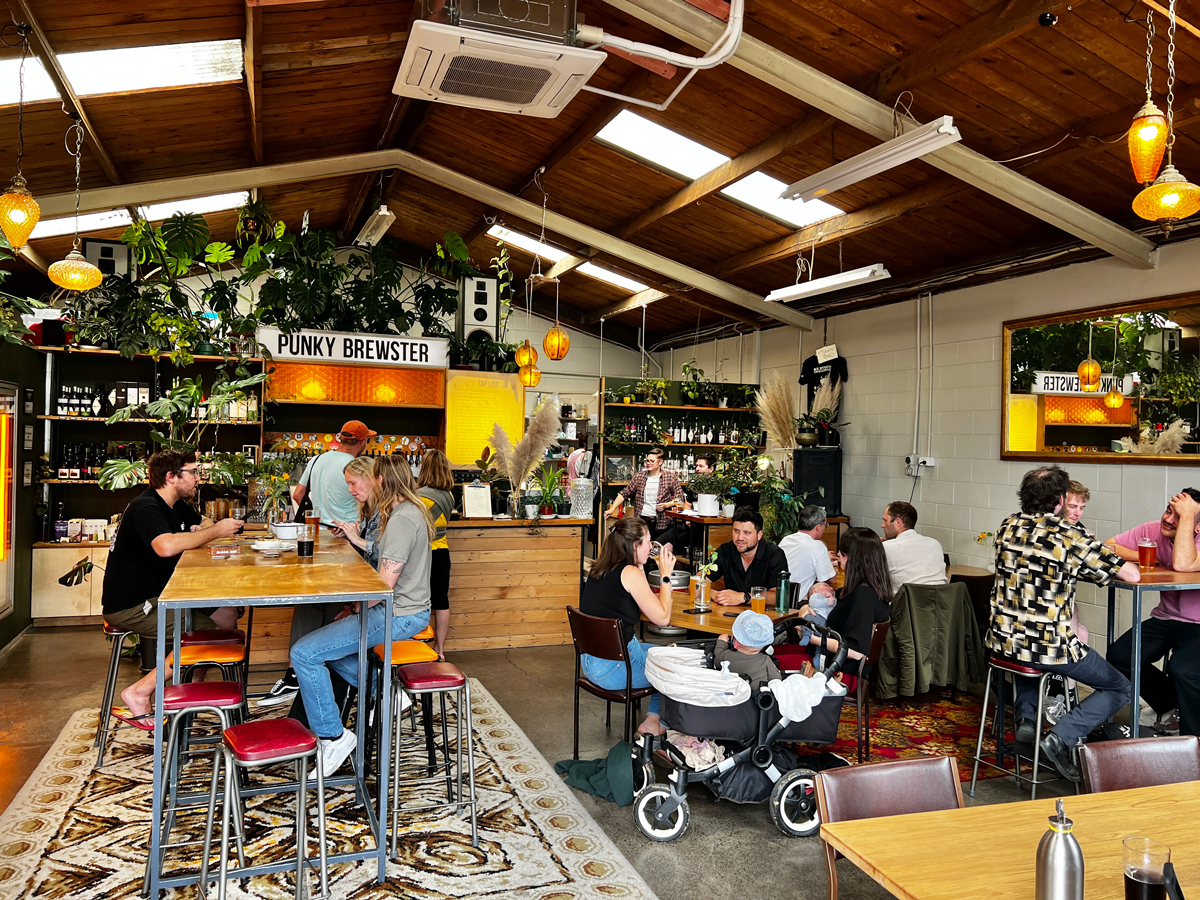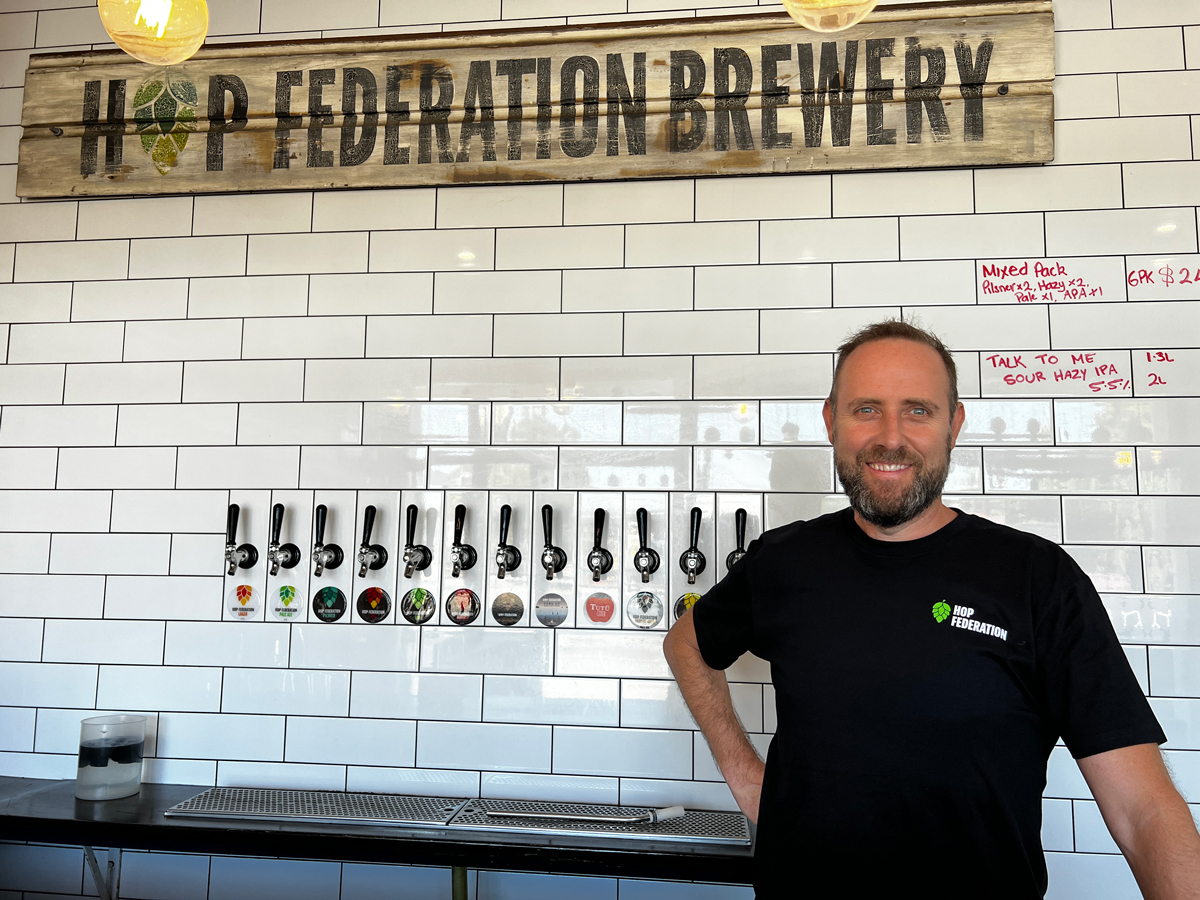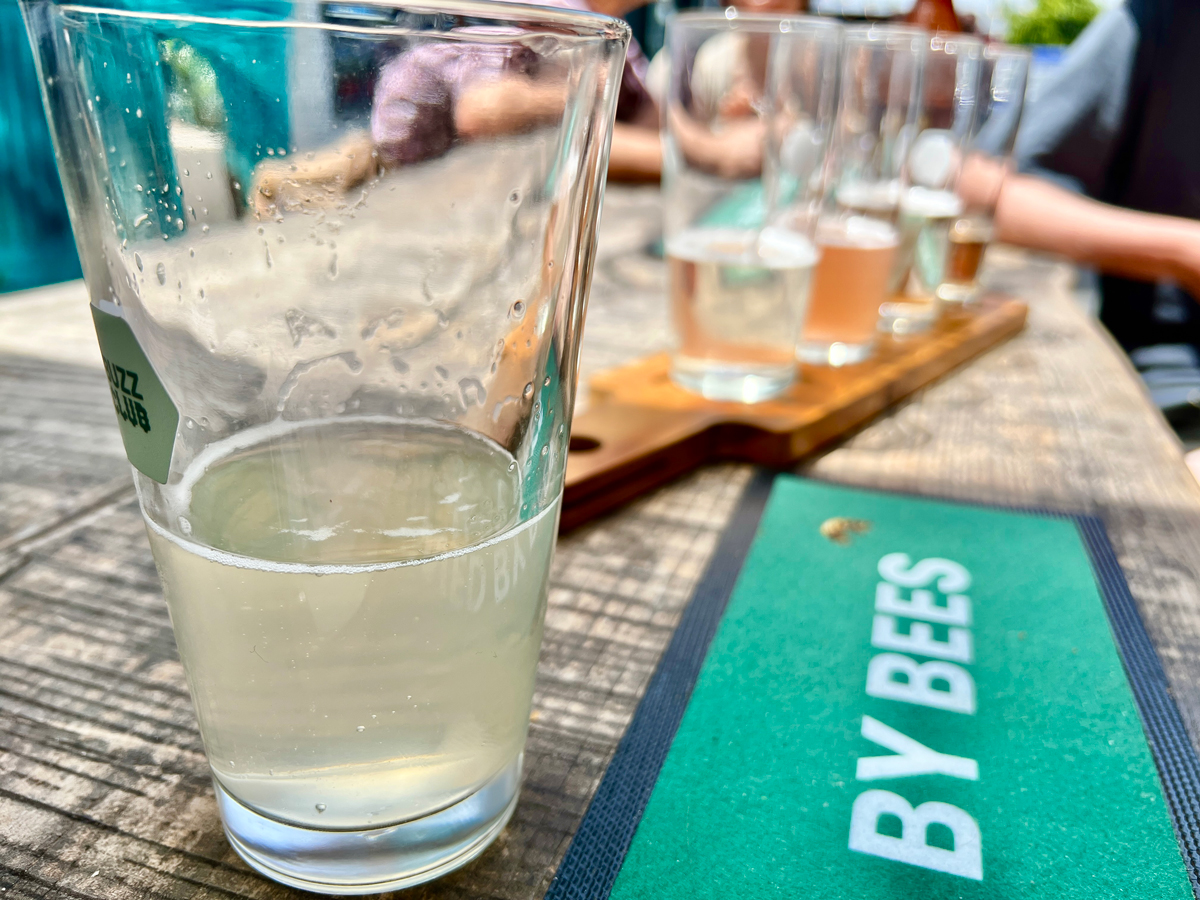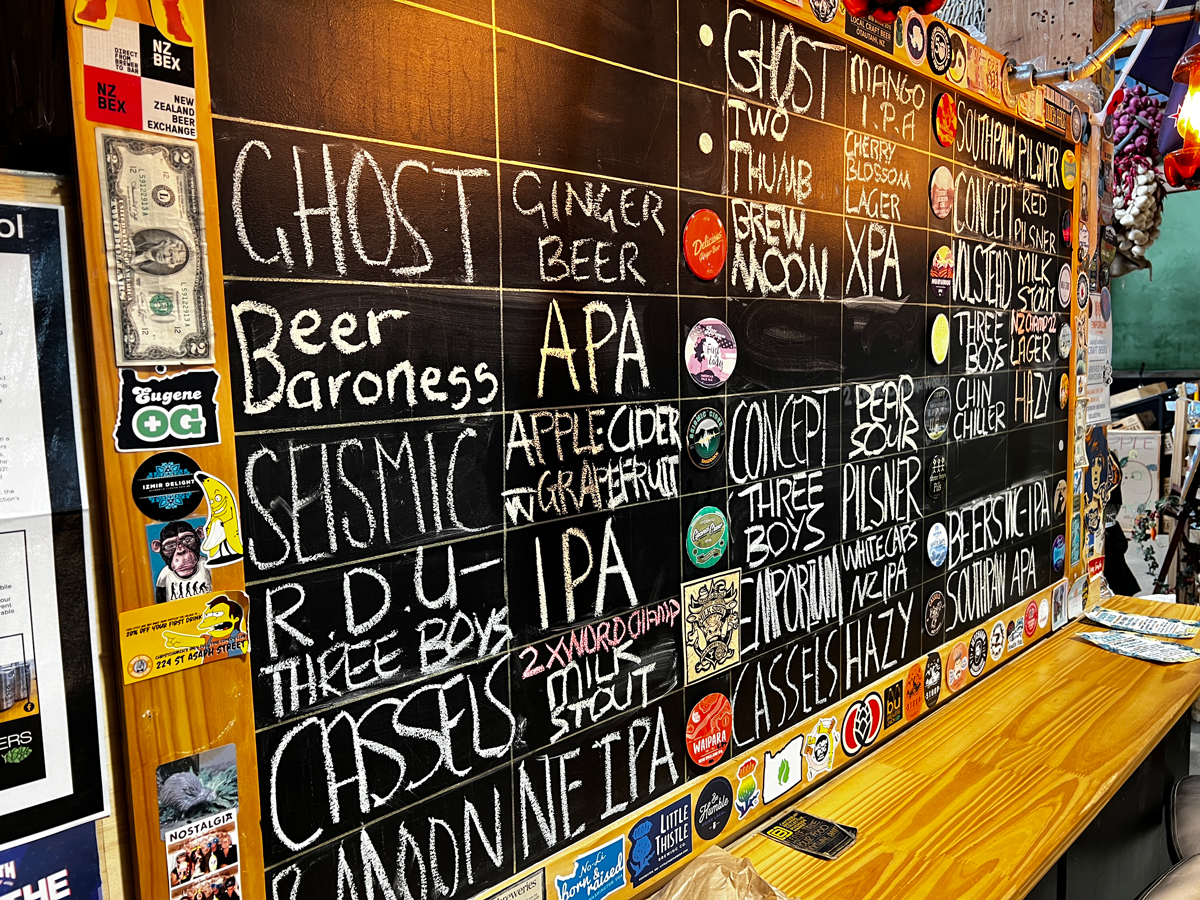New Zealand has much to offer visitors, from stunning mountains to beautiful beaches. As Matt Cavers discovers, the craft beer and cider coming out of Aotearoa is also worth the trip.

of locally-produced craft beer or cider. Matt Cavers photo
New Zealand: it’s a long way from here. Like, a really long way. In fact, if it were any further away, it would actually be closer. But despite it being incredibly inconvenient to get to, my family and I decided it would be the perfect spot for a holiday this past December. I knew that a bounty of delicious beer and cider offerings awaited me on the other end of the 13-hour flight.
On my last Aotearoa sojourn, the country’s craft cider and beer scene was in its infancy. Since that trip years ago, I’d heard that New Zealand cideries and breweries had come a long way, and I had a lot of catching up to do.
Jet-lagged and thirsty, we arrive in our home base of Christchurch, the South Island’s largest city, a week before Christmas. I haven’t slept more than an hour or two in the last day and a half, but I’m still lucid enough to find the spacious beer and cider cooler in the local New World supermarket. Instantly, I’m overwhelmed by rows of brightly coloured cans with names I’ve never heard.
A friendly Kiwi helpfully recommends a hazy IPA from Wellington’s Garage Project—says it’s “the best one on this whole shelf.” It’s the only one left. I lunge for it. On the other side of the cooler, I spot cans of Peckham’s Cider, and I pick up the Kingston Dry. I tried Peckham’s at CiderCon a few years back and I’ve been longing to have it again. We pile a few other necessities in our cart—including some luminous-looking golden kiwifruit and “pie and mash”-flavoured potato chips.
Back at the flat, the hazy IPA is fruity, creamy, and incredibly fresh, bursting with New Zealand-grown Nelson Sauvin and Rakau hops. And the Peckham’s is as perfect a UK-style traditional cider as you could ask for: light gold in colour, with an aroma reminiscent of apple skin and leather. It’s made from Kingston Black apples—a sought-after English bittersharp variety.
Also, the chips really do taste like pie and mash.

A few days later, I’m outside Punky Brewster, a beer spot in the Christchurch suburbs, and at a glance, I can imagine that I’m visiting a brewery anywhere in North America: youngish people, some with children, sip beer around upended barrels and wooden picnic tables, while a hundred metres away cars whiz across an overpass between box stores. But inside, it’s a species of drinking establishment unknown at home: it’s a “bar and fillery,” which means it’s a beer store, a bar, and a place to fill growlers (or, in local parlance, “riggers”), all in one.
I ask a bartender what to buy and I end up with an armful of IPAs in brightly coloured cans, just like I would at home. But at the last minute I grab one more thing: a bottle of 8 Wired Brewing’s Wild Feijoa sour ale. The feijoa is an odd fruit—native to South America, it’s a ubiquitous backyard crop throughout New Zealand. Back at our flat, the 8 Wired beer conveys the strange and wonderful feijoa flavour you have to fly overnight to experience: something halfway between lime and mint, with an odd-yet-compelling sharpness. Feijoas aren’t in season, so I’ll spend the rest of this trip chasing this weird bouquet in feijoa gummies, chocolates, and bottled smoothies.
On Boxing Day, our rented Corolla takes us north from the agricultural Canterbury Plain, across the lushly forested Southern Alps, and back down into the bucolic Motueka Valley, at the north end of the South Island. For kilometre after kilometre, tall hop vines border the highway, and then, as we come closer to the coast, the hop yards give way to densely planted orchards. It’s warm and humid and it feels like a good place to grow things.

By happy coincidence, across the road from the ice cream stand where we pull over in Riwaka, sits Hop Federation Brewery. I finish my kiwifruit soft serve and stroll into the brewery, where I chat with the manager. Hop Federation, he explains, is part of a Māori-owned food and beverage company that grows all the hops used in their beers. Later that day, on the front porch of our vacation suite in Golden Bay, I toast the early evening sun with a Hop Federation IPA. It’s crystal clear, and the hop aroma reminds me in passing of Sauvignon Blanc wine—but—no other way to put it—dank. It’s beautiful.

I’ve also made progress on my quest to consume as much feijoa as possible, having found a bottle of locally-produced Left Branch Cider whose charmingly lo-fi label advertises that it contains “Real Feijoas!!” I wonder if there are artificial feijoas.

On New Year’s Eve, two days before we leave, I’m back in Christchurch, drowning my sorrows at the Riverside Market. At lunch I washed down a pair of hand pies with a delicate, refreshing glass of feijoa and rātā honey “session mead” at the Buzz Club mead bar. Soon I’m surveying the chalkboard at the Canterbury Brewers Collective, and I suddenly know that I’ve only scratched the surface of the craft beverage scene here in Christchurch, let alone in New Zealand, and I’m almost out of time.

But I’m not one to give up, so I order a glass of grapefruit zest-infused apple cider from Christchurch’s Seismic Cider, whose name refers to the city’s devastating 2011 earthquake. The bartender tells me that some of Seismic’s products are made with fruit harvested from areas of the city abandoned after the quake. It’s a poignant reminder of how we can tell stories with the things we brew and make. I wish I had longer here to get to know these stories—but, somehow, someday, I’ll be back.




